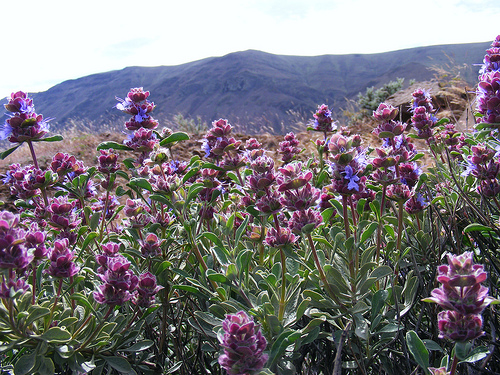Given the tremendous amount of publicity that the Atkins diet 2.0, a.k.a Keto diet, has been getting, I thought it would be helpful to do a review of how this diet stacks up against a whole food plant-based or vegan diet.
What is a Keto diet?
A Ketogenic or Keto diet is one that consists of high fat (70-80% of calories), relatively high protein (20-25% of calories) and low carbohydrates (5-10% of calories). It is typically made up of animal-based foods – below is a dot point summary.
Usually includes:
- Meat: Beef, Pork, Fish, Chicken
- Eggs
- Cheese
- Milk
- Nuts & Seeds
- Oils & Fats (mainly avocado, coconut oil, ghee, butter and olive oil)
- Vegetables (typically limited to dark green leafy vegetables & mushrooms)
- Fruit (berries in moderation)
Does not include:
- Starchy vegetables (sweet potato, pumpkin, legumes, etc.)
- Grains (oats, rice, quinoa, corn, buckwheat, rye, barley)
- Fruits such as banana, mango, pineapple, apples, oranges
What is the theory behind the Keto diet and why it is promoted?
The Keto diet is just another name for a LCHF (low carb high fat) diet and the basic premise of this diet is that by removing carbohydrates, the body will not absorb glucose into the blood stream. In doing this, you deprive the brain, and the body in general, of it’s primary fuel source and it begins to breakdown fats (fatty acids) and produce ‘ketones’ in the liver for the body to use as an alternative fuel source. The idea here is that by starving the body of glucose, you will initiate fat metabolism, which proponents of this diet suggest results in weight loss and greater mental performance.
It’s important to note this diet was originally designed back in the 1920’s as a way of controlling epilepsy symptoms in children. It is not well understood, but it is theorised that the shift in metabolism from carbohydrates to fatty acids and resultant use of ketones for energy has an anticonvulsant effect (1).
On the contrary, what macronutrients and foods is a typical whole food plant-based diet made up?
A well balanced whole food vegan or plant-based diet is typically made up of 55-60% of calories from carbohydrates, 20-25% of calories from protein and 15-25% of calories from fat.
Usually includes:
- Whole grains (brown rice, wild rice, black rice, oats, quinoa, amaranth, buckwheat, corn)
- Legumes (chickpeas, lentils, black beans, fava beans, pinto beans, kidney beans, soy beans etc)
- Starchy and non-starchy whole vegetables (potato, sweet potato, carrot, broccoli, eggplant, pumpkin, zucchini, dark leafy greens)
- Whole fruits (all)
- Plant milk (almond, soy, hemp, macadamia, pea, etc.)
- Nuts & seeds in moderation
- Oils in moderation (olive, coconut, avocado)
Does not include
- Animal products (butter, ghee, meat, fish, eggs, cheese, cow milk, etc.)
- Many saturated fats
- Processed oils (or if it does, minimal)
Why the traditional Keto Diet is dangerous and not something that comes close to a Plant-Based or Vegan Diet:
Now that we understand the high level difference between the two diets (macronutrients and types of foods), let’s discuss the two diets in terms of your health, because ultimately that’s what matters most. I have tried to simplify things and create a dot point summary. It’s important to note I am comparing the traditional animal-based ketogenic diet to a whole food plant-based diet.
1. A Keto diet has no doubt gained momentum because of the ‘end result’ that it is claiming… ‘weight loss‘. We can all agree that as a society, ‘weight loss’ is a buzz word that has been responsible for a number of fad diets, fad products and is ultimately a word used to manipulate consumer behaviour. Combine that with reinforcement of perhaps what we thought were ‘naughty’ behaviours (eating high fats, bacon, cheese, etc.), and you have the ultimate diet to promote (a WIN-WIN).
It’s no wonder this diet has gained traction when it sells us with ‘weight loss’ and at the same time promotes an eating behaviour that people historically thought was probably unhealthy. “Now you eat bacon, eggs, butter and lose weight…and forget your vegetables!”. Let’s take a deep breath, too good to be true?
The mechanisms of weight loss as a result of a Ketogenic diet are poorly understood. With many studies being performed on mice, however, it is theorised that it most likely due to not consuming carbohydrates and falling into a calorie deficit because it is simply a hard task to eat enough calories in FAT per day to equal the calories you are burning. So, it is more than likely a diet that simply results in weight loss by depriving your body of it’s primary fuel. We will come back to this point. Just because you see a skinny guy (or girl) post a photo of their abs with a plate of bacon and eggs does not mean it is the fat in the bacon or the fat in eggs that is to be credited. It’s not magic!
2. There is no living population that displays longevity having consumed a ketogenic diet. In stark contrast, the Blue Zones (Okinawa’s as an example) are clear examples of populations that consume a largely plant-based (high carbohydrate diet) diet and display longevity. These blue zone populations have the most number of centenarians (people aged over 100) and are not keeping people alive with medications, rather are seeing their centenarians thrive without medications and enjoying a high quality of life.
Another blue zone group, The Adventist’s, have been studied in great detail. Of 8,401 Adventist’s studied, in one segment of the research they found that by eating meat just 1 x per week increased their chance of developing diabetes by 74%. Another part of the study that followed 41,387 Adventist’s over 2 years showed a 62% lower risk of developing diabetes in the vegans compared to the omnivores (2).
3. Animal protein and fats have been clearly shown to increase your risk of various chronic diseases such as cardiovascular disease, coronary artery disease, type 2 diabetes and certain cancers. You can read more about that at my Animal Protein & Disease blog. So by choosing a Keto diet, you are attempting to induce a calorie deficit for a weight loss result while jeopardising your long term health. Studies have looked into and shown links between chronic ketosis, a state of acidosis, and increased risk of developing certain cancers (3)
Here’s what the National Cancer Council of Australia has to say about red meat:
Did you know that eating more than 700 grams (raw weight) of red meat a week increases your risk of bowel cancer? Or that the risk of developing bowel cancer goes up 1.18 times for every 50 grams of processed meat eaten per day?
The World Health Organization has classified processed meats including ham, bacon, salami and frankfurts as a Group 1 carcinogen (known to cause cancer) which means that there’s strong evidence that processed meats cause cancer. Eating processed meat increases your risk of bowel and stomach cancer. Red meat, such as beef, lamb and pork, has been classified as a Group 2A carcinogen which means it probably causes cancer.(4)
4. Think you are in your teens, 20’s or 30’s and don’t need to worry about foods that promote heart disease because your body is bullet proof? Studies backdating to the Korean War (and since replicated) have shown that cardiovascular disease begins silently. One study in particular looked at 300+ American men who were killed in the Korean War (killed in action so didn’t die of cardiovascular disease) and over 77% of them, mostly aged in their teens and 20’s (average age 22.1), had coronary atherosclerosis (severe plaque build up and narrowing of the coronary artery). This was one of the first studies that rocked the world proving that cardiovascular disease does not only develop and affect people in their latter years. Of course, this study has some limitations but it’s a great reminder that changes to your vital arteries and organs, in general, start happening in your youth, so healthy nutrition from the get go should be seriously considered (5).
5. If you choose a Keto diet, you are also forgoing a number of protective micronutrients that help your body thrive. By minimising the amount of starchy vegetables and fruits you consume, your body will be absorbing less vitamins, minerals, flavonoids, antioxidants, phytonutrients, phenols, etc. These molecules have anti-cancer, anti-infection, immune boosting, and cardio-protective functions. To put this simply, anyone suggesting you do a Keto diet is asking you to give up a food source like legumes, which have so many longevity-promoting benefits like cholesterol lowering and low glycemic load properties, in favour of things like dairy and oils which are micronutrient poor and loaded with nasties. So, again, this low carb, high fat Keto diet puts your Space Suit at further risk of developing illness and long term damage.
6. Weight loss can easily be achieved on a plant-based whole food diet by adjusting portion size and total calorie intake of your BALANCED meals to be in a slight calorie deficit. See this blog on protein and calorie consumption to help you calculate your total calories per day to be in a deficit. Why not have both – healthy weight loss/maintenance (and abs if you desire) and longevity.
Summary:
It is possible to lose weight and have ‘abs’ on a plant-based or ketogenic diet, however as you’ve probably heard me say before, A CALORIE is NOT A CALORIE. If you eat the same calories – let’s say 2,000 calories on a traditional Keto diet versus 2,000 calories on a balanced plant-based diet, which one do you think is going to help you thrive more and protect your Space Suit and ultimately lead to great longevity? Is it the diet that consist of high animal saturated fats, hormones, antibiotics, high carnitine, etc. or is the diet that gives you a balance of macronutrients, enough dietary fibre per day and also comes with with an immense amount of protective micronutrients?
Until there is a 50 year long study that looks at a population eating a Ketogenic diet, it’s going to be hard to quantitatively answer the above question. In the meantime, by understanding the mortality rate associated with consuming animal products, looking at populations such as the blue zones that clearly display longevity on a high carbohydrate and largely plant-based diet and understanding the role of important micronutrients (antioxidants, flavonoids, etc.), we enjoy a healthy plant-based diet with piece of mind that we are doing the right thing by our body from the inside out.
Further to that, ask anyone who has tried a low carb high fat diet how sustainable it was long term? Most people yo-yo off of it and stack weight back on. The best weight loss plan is one that’s balanced and sustainable so you can easily incorporate it into your daily regime and reap the benefits long term rather than just for one season of the year.
Lastly, I know a few of you on a plant-based diet will be wondering “What about a Plant-Based Keto Diet?”. Whilst I think a plant-based keto diet is far better than an animal one purely because you’re avoiding all the hormones, antibiotics, carnitine, etc., I am not a proponent of going above 20-25% of calories from FAT regardless of the source. I am also not a proponent of pushing your calories from protein above 25%. I think there is plenty of science linking saturated fats and high protein (along with high IGF-1) with chronic disease. The safer way to lose weight whilst ensuring you are getting all the micronutrients you need and giving your brain and body it’s preferred fuel source, glucose, is to adjust your calories on a balanced whole food plant-based diet to be in a slight calorie deficit.






